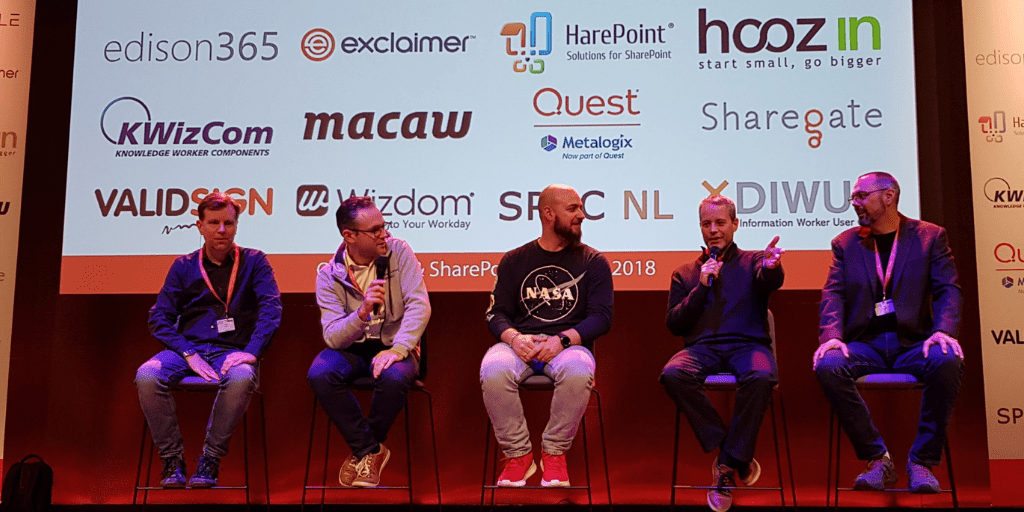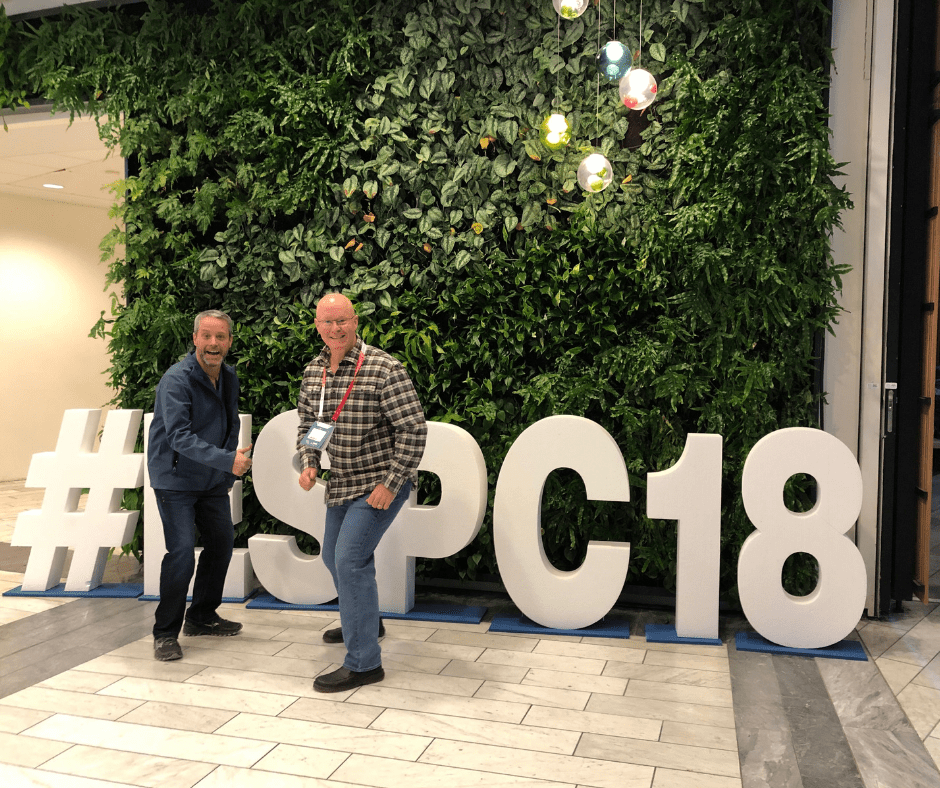6 Tips for Success When Changing Tech Roles
If you (or someone you know) are thinking of making a major tech career pivot, my story might help. After 20 years of working in Austin as a consultant, starting with web technology then landing on SharePoint and Office 365, I made a pivot recently to work for Spanning Cloud Apps.
Making my way from a Microsoft-centric organization of five consultants, to a company of more than 60 who use a broad spectrum of tools for communication, collaboration, and development, has been non-trivial! As my three-month anniversary approaches, it’s a good time to reflect on my transition and share what I have learned.
The Deep End
Being thrown into the deep end is often thought of as a bad thing. My thought? In tech, the most interesting things are happening in the deep end – so go get those toes up to the edge and jump in! For me, the deep end at Spanning hasn’t yet been a technology leap — it was a leap from being part of a very small work-remote team, to joining a team of professional marketers as “the technical guy.” I was immediately comfortable with some things, using Slack instead of Teams for example. But surprisingly it was little things, like learning to use the keyboard on a Mac, or no longer being able to work in my pajamas everyday, that proved to be more challenging.
My new team was immediately supportive and helpful. Even though some of them are clear across the country, we would chat, sometimes hourly, as I got up to speed. On my third day we shut our downtown office to begin a move to our new amazing space a little further West. I am accustomed to autonomy with my schedule and “remote work,” so spending the balance of my first 10 days of work out of office was no big deal. In fact, I think it helped me focus on the need to get up to speed with my new job and connect with my team.
The Whirlwind of Work
My role is to be the technical thought leader on the Office 365 marketing team. What that means is still doing a lot of what I was doing before — writing, blogging, presenting, and creating demos — only now, that work is for our product, Spanning Backup for Office 365. I still get to attend conferences and speak. Before I took this new role, I already had a couple conferences lined up. Spanning wanted me to attend the European SharePoint Conference (ESPC) in Copenhagen as well, so my November dance card was Haarlem, Netherlands, home for a couple days of Thanksgiving, then Copenhagen, Denmark, and finally Orlando, FL.
 While in Copenhagen, I participated in a half-day event separate from ESPC that was put on by a regional reseller. It was billed as “The Battle of the Backups” and I was presenting for Spanning “against” two other vendors. It was all good fun. The thing that struck me was, even though the first presenter spoke entirely in Danish, I could understand most of what he was talking about because we all use the “universal sign language of technology.” We wrapped up the morning with a panel discussion, an open forum for all the vendors to answer questions, and I was pleased with how amicable it all was. Our different tools are designed to support different use cases and solve different business problems, and I think our audience learned a lot about the need for cloud-to-cloud backup for Office 365.
While in Copenhagen, I participated in a half-day event separate from ESPC that was put on by a regional reseller. It was billed as “The Battle of the Backups” and I was presenting for Spanning “against” two other vendors. It was all good fun. The thing that struck me was, even though the first presenter spoke entirely in Danish, I could understand most of what he was talking about because we all use the “universal sign language of technology.” We wrapped up the morning with a panel discussion, an open forum for all the vendors to answer questions, and I was pleased with how amicable it all was. Our different tools are designed to support different use cases and solve different business problems, and I think our audience learned a lot about the need for cloud-to-cloud backup for Office 365.
The challenge of working in Copenhagen was that around about the time we’re done for the day, Austin was waking up and getting started. We had scheduled a webinar for the US time zones, for example, and that meant delivering it at 8 pm from Copenhagen. The following night I was interviewed by an East Coast-based writer after dinner. So far … so much wonderful whirlwind!
 Lessons Learned
Lessons Learned
I’ve pulled together my lessons learned in making a tech career pivot. In general, these six ideas should apply to anyone changing roles, particularly in the work of cross-disciplinary teams that have to pay attention to a mix of short- and long-term goals.
Be flexible.
In my case, when previously working for myself, I had the ultimate in autonomy over my schedule, with only myself to hold me accountable. Joining a team I needed to fit my new responsibilities into a matrix where others depended on my delivery for their responsibilities. Being flexible in when I work on my own deliverables while still moving the team deliverables forward takes practice.
Protect your calendar
Our team uses kanban boards for everything we do. This allows teammates to see what each other is working on. I transfer the work effort to my calendar so that I “schedule” the time to accomplish tasks. While I admit my relationship with our boards is still a work in progress, it is vital for your personal sanity that you schedule time to accomplish your personal work so that you can be flexible. It may seem counterintuitive but creating meetings with yourself to get your work done provides freedom from others who unwittingly book time that breaks your creative flow. (If you are interested in more tips like this check out my video “5 Tips for Modern Task Management.”)
Communicate Early and Often
I am a social person, probably the biggest thing I missed as an independent consultant is the social aspect and the vibe of working with a team in an office. Working closely with a team is great, but if you have been solo don’t be afraid to ask questions and seek advice. If you are headed toward a deadline and are blocked let your fellow teammates know. Particularly in the early days of a new role, you cannot be expected to know everything and what every team member is responsible for. In my case, I was beginning to feel overwhelmed about a deadline that we had set a few weeks out. I confessed that I was worried I’d miss the deadline. My team immediately dismissed my worry because nobody had set a hard dependency on my arbitrary deadline yet. If I had waited longer to voice my concern it could have become a problem.
Find a Mentor or Ask For One
Mentorship is common in many companies; if you don’t get assigned a mentor ask for one. You should be expected to perform the duties of your new role, but you still need a guide to help you through the usual “employee onboarding” process. Simple things like learning the tools of your team, how to report expenses, and particularly introducing you to other employees. When someone helps me on a particular task I always ask “Is this part of your job?” (or words to that effect) meaning, “Can I come to you if I have more questions about this or should I ask someone else?” Always ask folks if they have the time to help you.
Take Notes on Everything
I am a voracious note taker because I am terrible at remembering names. If you are going to ask someone to be your mentor and teach you, return the favor with respect by making notes of what you just learned so you don’t have to ask twice. Make notes of the people in your meetings and what they are responsible for. Whether hand-written or digital, you will eventually find the sweet spot for how much you need to record. I admit, I still refer back to my early notes to remember the names of folks I don’t work with on a daily basis.
Seek to Contribute Value Daily
A million years ago when I was first floating my resume out for my first job in technology my brother gave me some great advice, he said “No matter what job you get, be a rainmaker.” In other words, be the best employee you can be. I take this advice to heart and work every day to contribute value. You may contribute value by producing results individually or as part of a team, by helping others, or by simply being the person who took the time to clean the breakroom after the company meeting. Contributing a positive can-do, ready to help the team win attitude, where people seek to work with you is my definition of success.
 But Wait, There’s More! Upcoming Sessions and Events
But Wait, There’s More! Upcoming Sessions and Events
Since starting with Spanning, I’m bringing new content to upcoming presentations. One new area of focus is how businesses of every size can benefit from the cloud. “Your Business is NOT too small for the Cloud!” walks through specific use cases and services that business of all sizes can use to drive business value and reduce the burden of managing business processes.
I developed another new session as a webinar, and will be presenting it live; “Covering your Assets” takes a look at how Office 365 Administrators, Site Administrators, and End Users can protect their data. I demonstrate techniques for protecting data in your sites from accidental data loss and review security measures you can implement now to protect your content.
Finally, I have been asked by so many folks about how to use the amazing SharePoint Search Query Tool (https://github.com/SharePoint/PnP-Tools/tree/master/Solutions/SharePoint.Search.QueryTool) that I decided to create a session and video series. My session is based on a 20-minute session I created for Office 365 and SharePoint Connect in Haarlem called “Query Like A Pro – How to ask SharePoint Better Questions.” In this session, I’ll demonstrate how to construct queries and how to test the results. The resulting queries can then be used in Result Sources, Query Rules, Search Web Parts, and more. I’ll also be teaming up with my friend Agnes Molnar to present a full day search workshop in Branson and Wiesbaden, so join us!
Join me if you can!
SPTechCon – Austin, TX – February 10-13, 2019
North American Collaboration Summit – Branson, MO – March 14-15, 2019
European Collaboration Summit – Wiesbaden, Germany – May 27-29, 2019
Check Out Spanning’s Events Calendar
*** This is a Security Bloggers Network syndicated blog from Spanning authored by Matt McDermott. Read the original post at: https://spanning.com/blog/6-tips-success-when-changing-roles/





